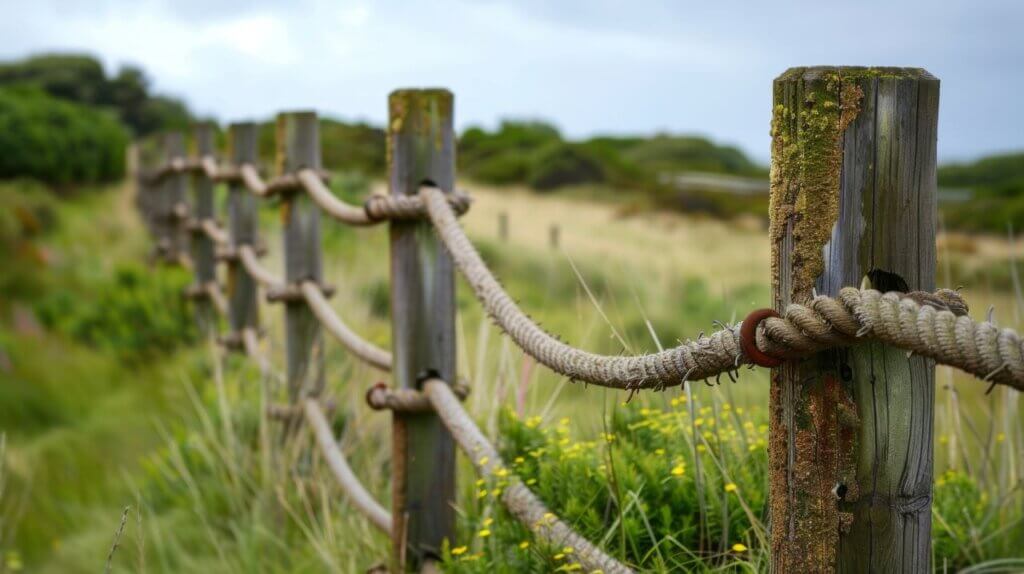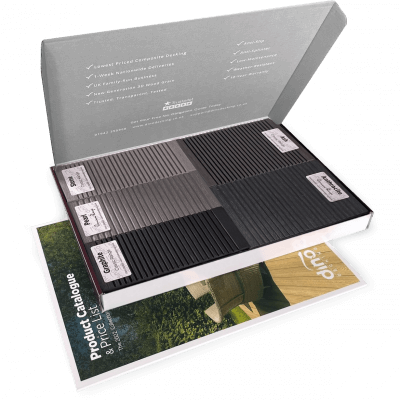5 Composite Decking Lighting Ideas
Our composite decking looks great in any setting, but you can really make your outdoor spaces shine with our decking
Products in Stock
Lowest Prices
Express Delivery
10-Year Warranty
Early April Sale. Up To 15% Off.

Ah, the age-old question that’s puzzled many a DIY enthusiast and professional alike: just how far apart should those fence posts be? It’s not exactly the sort of query that keeps you up at night, but get it wrong, and you might find yourself with a wonky fence that’s about as useful as a chocolate teapot. So, let’s roll up our sleeves and get to grips with this key aspect of fence construction.
Before we take a look at measurements, it’s worth noting that there’s no one-size-fits-all answer. The ideal spacing depends on several factors, much like how the perfect cup of tea depends on brewing time, water temperature, and personal preference.
Different fence types have different needs, so it’s not always a cut-and-dry process.
Traditional wooden fences typically require posts every 6 to 8 feet. It’s a bit like setting up a cricket pitch – you need the right distance to keep everything in play.
Chain link fences on the other hand can stretch further, with posts often spaced 8 to 10 feet apart.
Vinyl fences, much like that one friend who needs a bit more support, usually require posts every 6 feet or so.
Composite fences often allow for wider spacing, and our top-quality composite fence panels can often be installed with posts up to 8 feet apart, giving you a sleek, uninterrupted view.
Metal fences, sturdy as they are, typically need posts every 6 to 8 feet.
The ground beneath your feet (or fence) plays a big role too. It’s not just about what’s above ground, you know.
If you’re blessed with stable, dry soil, you can usually stick to the standard spacing for your fence type. Lucky you!
When it comes to soft or sandy soil, you need to compensate by spacing your posts closer together, typically 6 feet or less.
Clay or wet soil can be as troublesome as British weather, so you might need to space posts closer and dig deeper to ensure stability.
Height matters, and not just when you’re trying to reach the top shelf at Tesco’s.
For standard 6-foot fences, the spacing mentioned earlier for each fence type usually suffices.
Tall fences generally need more support. For fences over 6 feet, consider reducing your post spacing by a foot or two.
If your fence will be supporting planters, lights, or the weight of climbing plants, you’ll want to reduce the spacing.

Now, let’s get down to brass tacks. How do you figure out the right spacing for your particular fence?
Start by measuring the total length of your fence line. Then, consider the factors we’ve discussed – fence type, soil conditions, and height.
Once you’ve got your measurements, divide the total length by your chosen post spacing. Round up to the nearest whole number, and that’s how many posts you’ll need. For example, if you have a 30-foot run and want 8-foot spacing, you’ll need 5 posts (30 ÷ 8 = 3.75, rounded up to 4, plus one extra to bookend the fence).
Even the best-laid plans can go awry, so here are a couple of pitfalls to watch out for:
Spacing posts too far apart is like trying to stretch a pound too far – it just doesn’t work. On the flip side, placing them too close is overkill and a waste of materials.
Remember, it’s not just about spacing. Proper installation is key. A post that’s not set deep enough or poorly concreted is about as useful as a handbrake on a canoe.
And there you have it – the long and short of fence post spacing. Remember, while these guidelines are a good starting point, always check local council regulations and, when in doubt, consult a professional. After all, a well-built fence is an investment in your property. Speaking of investments, don’t forget that the type of fencing material you choose can affect your long-term maintenance needs. Our fence maintenance guide offers some top tips for keeping your fence in tip-top shape, regardless of the material you choose.

Our sample pack contains a sample piece of each colour currently available. Order your free sample pack today to compare the colours and get a true feeling of the Dino Decking range!
Our composite decking looks great in any setting, but you can really make your outdoor spaces shine with our decking
If the idea of having rats under your decking makes you shiver, don’t worry. We’ll let you know the signs
Business hours
Monday: 09:00 – 17:30
Tuesday: 09:00 – 17:30
Wednesday: 09:00 – 17:30
Thursday: 09:00 – 17:30
Friday: 09:00 – 17:30
Saturday: Closed
Sunday: Closed
Contact us
01942 355968
support@dino.co.uk
Collection Address: Unit 1 Wetheral Close Hindley Ind Estate Wigan Greater Manchester North West WN2 4HS
Pages
Products
Testing
Copyright 2025 Dino Decking Ltd All Rights Reserved.
VAT Number: GB296097848.
Company Number: 10837233.